My data changes. I want the color bar to remain the same. Here is some sample code:
x1 = np.linspace(-10, 10, 100)
x2 = np.linspace(-10, 10, 100)
X1, X2 = np.meshgrid(x1, x2)
Y1 = np.sqrt(np.square(X1) + np.square(X2)) # want the gradient bar always based on this
Y2 = np.sqrt(np.square(X1)) # sometimes the data changes, but want same gradient bar
figur = 2
if figur == 1:
colormap = Y1
elif figur == 2:
colormap = Y2
cm = plt.cm.get_cmap('viridis')
plt.scatter(X1, X2, c=colormap, cmap=cm)
v = np.arange(0, 14.2, 2)
cbar = plt.colorbar(ticks=v)
cbar.set_ticks(v)
cbar.set_ticklabels(v)
plt.savefig('fig' + str(figur) + '.png')
plt.show()
Here are the plots. When figur in the code is 1 or 2, there is different gradient data being plotted. However, I would like for the gradient color bar to remain the same (0, 14.2) for both plots.

How can I set the gradient bar to be constant, arange(0, 14.2, 2) for multiple plots even when the gradient data currently being plotted only goes to say 10?
